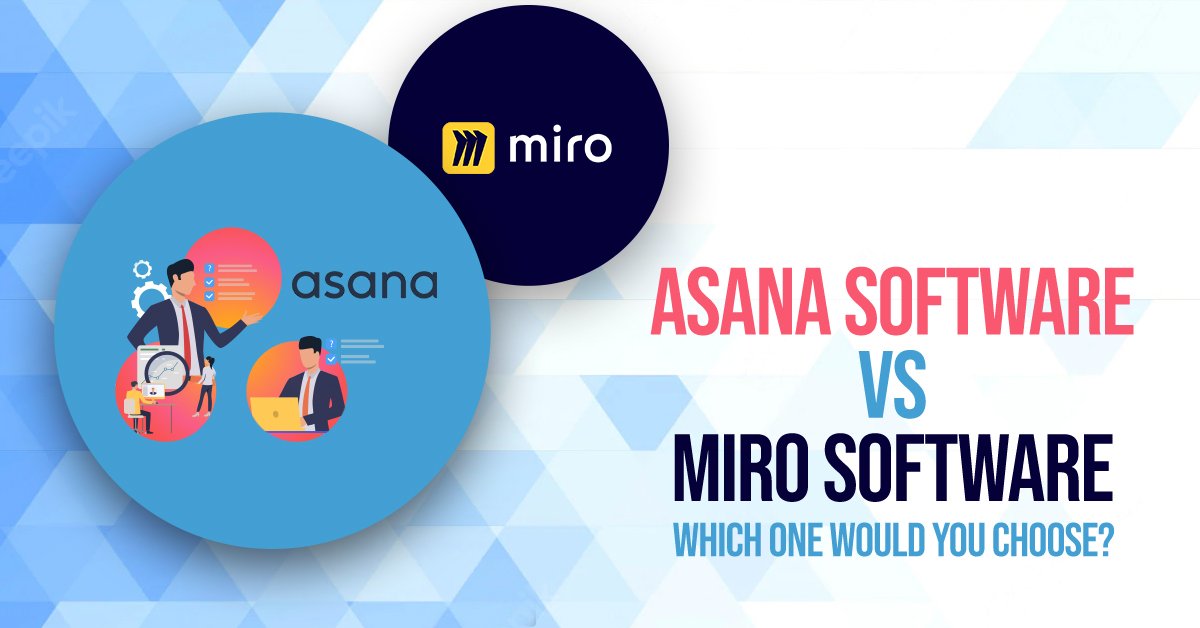
Project management teams rely on robust software to help them complete simple tasks. However, to make sure they are making the right choice they need to go through user reviews. With the help of reviews, we have compiled an Asana software vs Miro software comparison to help companies choose between them. Asana and Miro are both highly rated in terms of features but there are specific similarities and differences between them. The article focuses on its functionality, ease of use, pricing plans, pros, and cons.
Asana Software
Asana software provides teams with the assistance to carry out their daily tasks and strategically plan projects. Tasks will move ahead much faster and users will be able to achieve more with less. The process is similar no matter where the company is located and how many departments are involved. The software has thousands of paying customers and millions of free users around the world. Teams rely on Asana to get everything done from planning the project objectives to pulling off a successful digital transformation across the organization.
There is no longer a need for long spreadsheets or email threads because the teams can collaborate and communicate without having to switch windows. This is a great solution for those companies where departments are working out of silos or half of the workforce is remote. Everyone can come together and contribute to the project by sharing files, assigning tasks, combining work, and receiving updates from all fronts. The software can help design cross-functional workflows so everyone involved is in the loop.
When comparing Asana software vs Miro software, it is important to note that Asana makes it possible to track initiatives or status updates with ease. The users will be receiving an accurate view of their progress towards all goals and also have the platform to report activities they are up to in real-time. They will be able to create visibility for stakeholders and team members too. Many Asana users are global brands and they trust the program to provide them with the support they need.
Asana Pricing
Asana software has four different pricing plans and they each provide users with different levels of features or add-ons. The basic version is completely free and it can be used to create boards, tasks, or lists. The premium version starts at $10.99 per user and the total cost depends on whether the client chooses monthly or annual billing. The per-user rate is lower for annual billing for the business and enterprise plans as well.
The vendors offer a free trial to those who want to get a taste of the paid features without spending any money on them.
Pros
Asana has an interface that is similar to Facebook with an entire timeline that shows all recent updates. There are design options that are minimalistic, goal-oriented, and easy to customize.
The user interface is very user-friendly which makes it a popular platform for task and project management.
Cons
- The timeline view has its downsides too especially when conflicting events are appearing side-by-side.
- User support takes longer to reply than some of the other competitors.
Miro Software
Miro project management is a cloud-based tool used by midsized businesses for collaboration and communication. The solution is mostly known for its digital whiteboard and can be used to build ideas, conduct research, and map out customer journeys. The teams can develop user stories, wireframe their project, and conduct an entire range of collaborative activities. The toolkit included in the software makes it easier to create mockups, schemes, or pen down ideas.
The digital collaboration platform is one major difference between Asana software vs Miro software. It allows users to create detailed diagrams and add annotations wherever required.Users can leave feedback, add comments, and request input wherever necessary. The boards are created with the help of pre-installed templates, and they can be converted into a PowerPoint presentation or saved as a PDF file. Miro is also integrated with an entire library of icons, forms, and other content which can be uploaded to the cloud.
Miro can integrate with other cloud storage platforms and import files directly from there. It helps distributed teams work together efficiently and brainstorm themselves out of a sticky situation. They can plan their workflows and remain Agile throughout the process. There are millions of users ranging from designers, developers, product managers, thinkers, and team workers that use Miro to accomplish big things. It is the perfect solution for remote collaboration and employees working from different locations can come together without missing a beat.
Miro Pricing
Miro project management has a free version and offers premium pricing plans as well. The paid plans start at $10 per user per month and can go down to $8 if the company chooses annual billing. The free account allows users to add only 3 editable boards and invite unlimited team members. However, paid members to get to enjoy the extended features which include unlimited boards, private board sharing, guest members with viewing and commenting privileges, and advanced employee management.
They can also use customized templates, single sign-on, and integration options to make sure all their favorite tools are available in one place. With customized enterprise pricing, companies can get a specific quote according to their requirements. A free trial is also available so users can try out the advanced features without having to pay for them.
Pros
- An organized interface with everything available in the right place.
- It can integrate with different software giving users the freedom to do whatever they want in one single space.
Cons
- The software has some bugs especially when it comes to modifying the display of the boards.
- The copy-paste option lags especially when users are trying to add images from the clipboard.
Conclusion
When it comes to Asana software vs Miro software, there is no clear winner. However, the teams should schedule a demonstration or request a free trial for both software to see which one is more suitable for their future needs.





